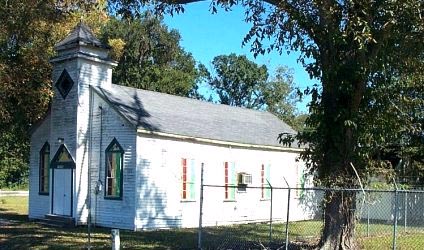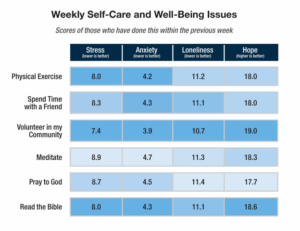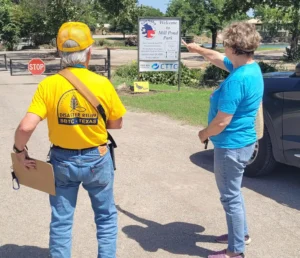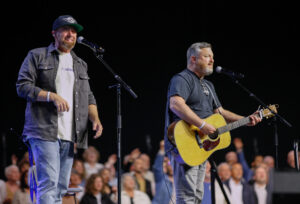
COLUMBIA, Ky. (BP)–Bobby Loy’s roots at Pierce’s Chapel Baptist Church stretch back to 1888, the year his grandfather’s family helped start the rural congregation. Two generations later, Loy acted as treasurer, deacon and song leader.
He fondly recalls the 1960s and ’70s, when attendance peaked at 45, including many children. From there it steadily declined. By the time the doors closed at the end of 2000, Sunday turnouts averaged about a dozen.
Sadly, the end came just several years after members spent $25,000 adding a 12-by-36 room on the back for a kitchen and the first-ever indoor bathrooms.
“Everything runs its course and it ran its course,” said Loy, who continues to maintain church records and mow the grass. “You hate to see it, but what can you do? You can’t make people go to church.
“I can show you two or three churches that are going to have the same problem unless a miracle happens,” he added. “The small rural churches are dropping by the wayside because everyone goes where the activity is. That’s the name of the game.”
With a majority of Southern Baptist churches numbering under 100 — approximately 22,000 congregations — the situation in rural and small-town areas represents a convention-wide concern.
“I think the future of the rural church depends on the nature of rural life,” said Gene Mims, Vice President of Church Resources of LifeWay Christian Resources of the Southern Baptist Convention. Previously the pastor of several small churches, Mims wrote a book last year that characterized the different types of churches and pastors in SBC life.
“Some rural churches are going through tremendous change,” Mims said. “A lot are part of urban areas that have created suburban sprawl and are seeing new churches which don’t relate to the historic character of the area.”
There is enough unease in Kentucky, primarily a rural state, that this year’s state directors of missions conference focused on revitalizing churches.
Keynote speaker Jim Harrington, former director of the Union Baptist Association in Houston, Tex., noted that rural churches that continue to resist change are struggling to attract bivocational pastors.
“Are we going to make the changes needed to reach our children and grandchildren? Or keep things the same to meet the expectations of the older generation?” commented Randy Jones, director of missions for the Kentucky Baptist Convention. “Each church has to answer those two questions.”
Wilburn Bonta, director of missions for the Baptist association in Pierce’s Chapel’s area, called the situation there a reflection of what may happen to smaller churches across the SBC that fail to provide children’s activities.
He said Baptists need to be aware of the situation facing their country brethren.
“These little churches that are running 30 to 40 people and over half the congregation is retired are going to be in trouble in a few years,” said Bonta, who oversees another church that has dwindled to a few people and hasn’t met this year.
“We’re seeing people move to some of the larger churches,” Bonta said. “When I find someone who did that, they tell me it’s because their new church has things for their children.”
Robert Clark, director of missions for the Taylor County, Ky., Baptist Association, foresees major changes ahead for his rural members. About 75 percent of the Baptist pastors in his county are bivocational and many of them are aging with the churches, he said.
“I make visits to all of ’em,” Clark said. “Most have a noticeable absence of young people and that’s the future of the church. The graying of the members and pastoral leadership is a great concern.”
The pastor of a central Kentucky country church that averages 225 on a Sunday said rural congregations must recognize the challenges they face.
While Bruners Chapel Baptist Church has experienced healthy growth the past five years, Larry Redding is concerned for his smaller counterparts.
Churches can no longer rely on tradition and experience to maintain their numbers, said Redding, who notes that people commonly drive 15 to 20 miles to attend a church that meets their needs.
“Rural churches that are comfortable doing what they’re doing are running 35 to 40,” the pastor said. “But we have to do whatever we can to reach our culture for Jesus Christ. Churches have to gradually work toward change, reach out, and have a mentality for growth and evangelism.”
One of the major problems facing rural churches across the country is their resistance to change, Mims said.
He said most of them fit the category of “family chapel” — churches that sprang up around several key families and expanded through natural growth within their extended families.
The problem these churches face can be seen in the Nashville, Tenn., suburb where he lives. There a newer Baptist church averages 2,500 on a Sunday, while a much older, formerly rural church attracts 30 to 40 people.
“They used to be out in the country,” Mims said of the latter congregation. “They used to sustain themselves mainly through family. In the old days, that was easy because everyone would stay there and farm. These churches have a hard time changing and incorporating new people into the church.”
However, those who are willing to change and touch their community can thrive, Mims said. He pointed to First Baptist Church of Woodstock, Ga., a once small church that today averages more than 5,000 on a Sunday.
While it isn’t easy, the LifeWay official said the key to churches surviving is getting serious about fulfilling Christ’s Great Commission as outlined in Matthew 28:18-20.
“The centerpiece of it is faith and why we’re here,” Mims said. “Rural churches grow just like big churches. They do it by getting outside the walls and serving people. They have a sense of faith and destiny. They know they’re not here just for themselves.”
–30–
(BP) photo posted in the BP Photo Library at https://www.bpnews.net. Photo title: RURAL CHURCH.
















